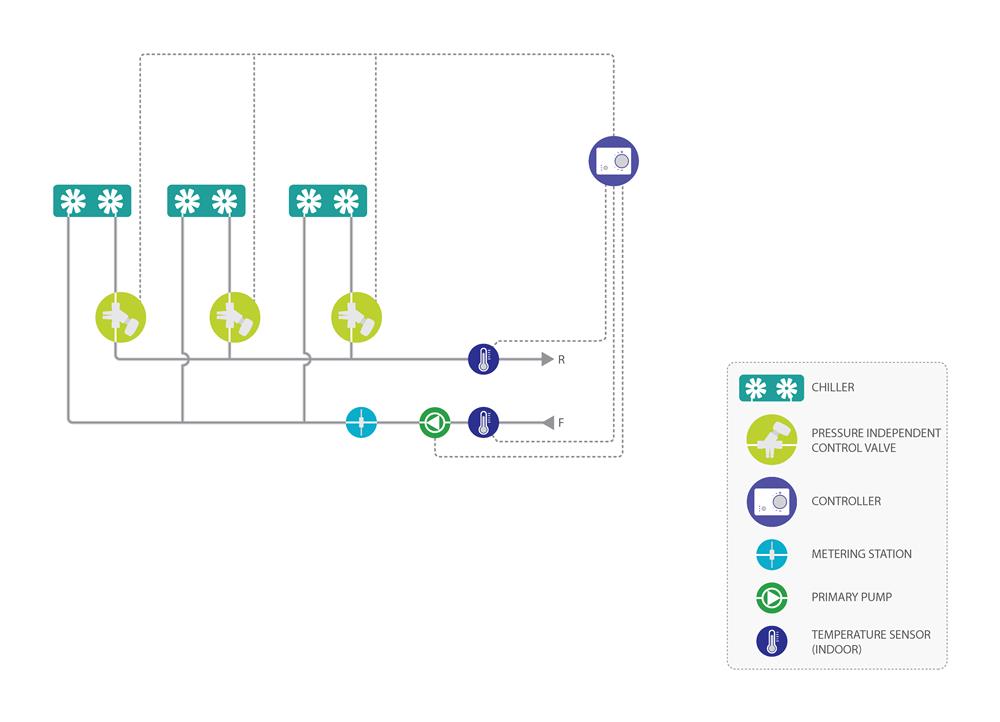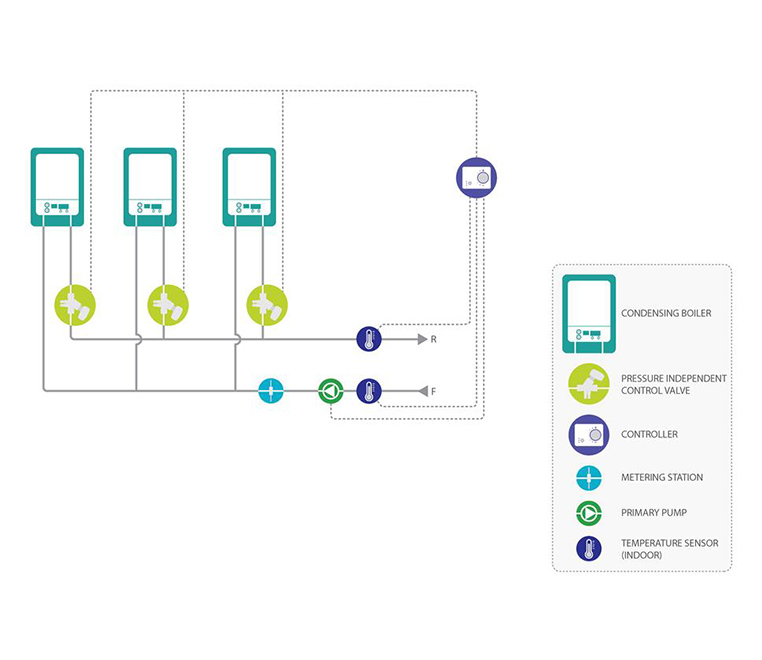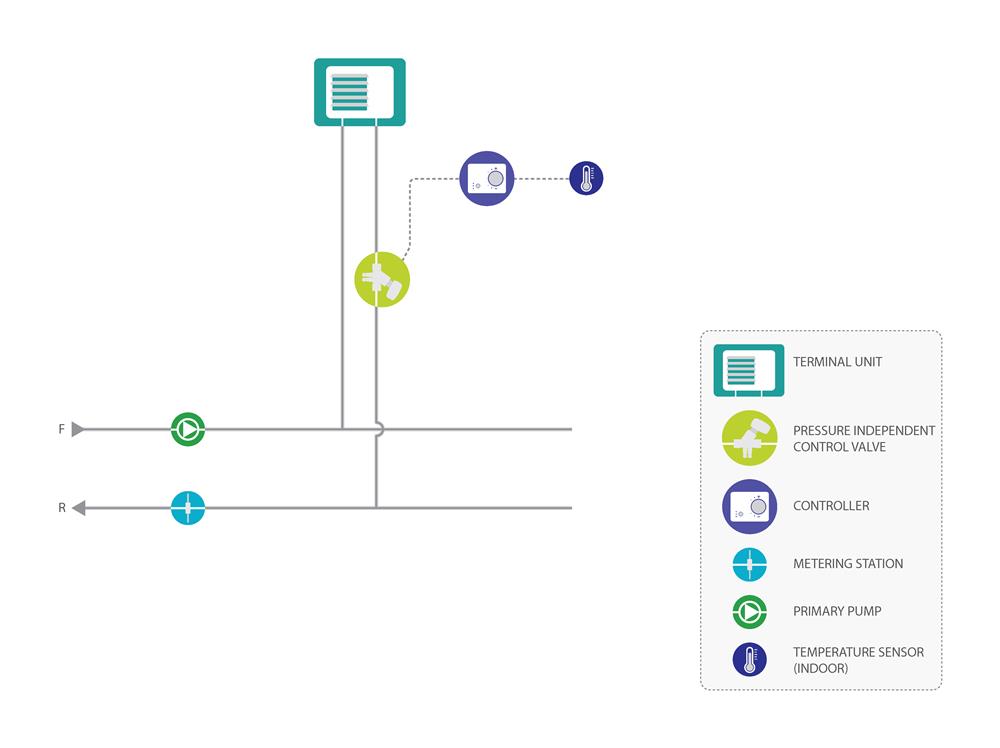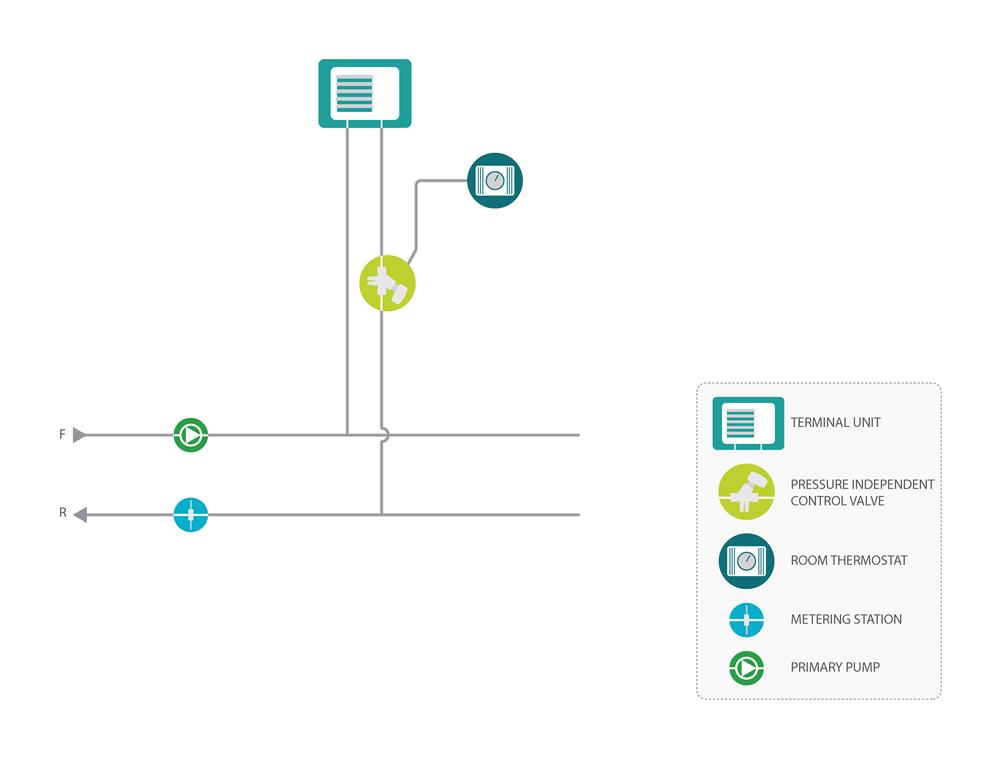VARIABLE SPEED CHILLER – PICV CONTROL

Variable Speed Chiller – Plant Room
with PICV control
Function
The variable speed chillers are connected to the controller, which controls the flow through each chiller by the PICV.
The controller measures the inlet and outlet temperatures to maximize Delta T and regulate the variable speed pump to maintain the required pump pressure.
For optimal chiller efficiency, the use of multiple chillers at lower capacity or cascade control at part load shall be selected, depending on the chiller design and control philosophy.
Benefits
- The PICV ensures balancing of the flow and eliminates the use of both static balancing valves and differential pressure control valves.
- Simple installation as only the PICV is required with no need for additional pressure or flow balancing valves.
- Low total pressure loss in the system due to simple design.
- The flow can be set directly on the PICV without the need of a manometer or a commissioning unit.
- The differential pressure only needs to be checked at the PICV to set the required flow.
Considerations
- A metering station can be placed on main line if additional flow verification is required by the witnessing authority.
- A minimum bypass flow can be required by the chiller to secure instant cooling or circulation of chemicals in the system. This should be placed at the most appropriate place in the system.





